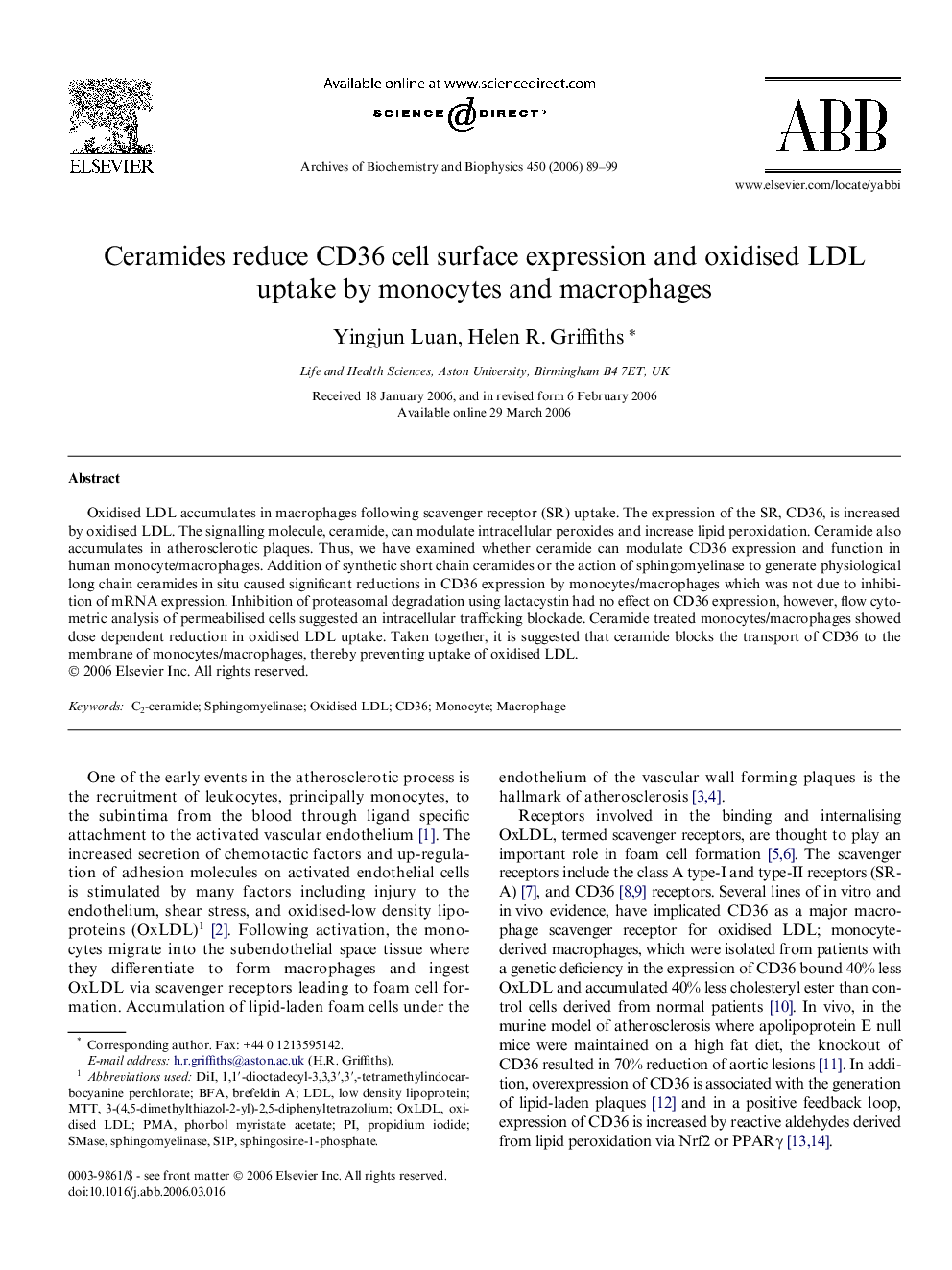| Article ID | Journal | Published Year | Pages | File Type |
|---|---|---|---|---|
| 1927559 | Archives of Biochemistry and Biophysics | 2006 | 11 Pages |
Oxidised LDL accumulates in macrophages following scavenger receptor (SR) uptake. The expression of the SR, CD36, is increased by oxidised LDL. The signalling molecule, ceramide, can modulate intracellular peroxides and increase lipid peroxidation. Ceramide also accumulates in atherosclerotic plaques. Thus, we have examined whether ceramide can modulate CD36 expression and function in human monocyte/macrophages. Addition of synthetic short chain ceramides or the action of sphingomyelinase to generate physiological long chain ceramides in situ caused significant reductions in CD36 expression by monocytes/macrophages which was not due to inhibition of mRNA expression. Inhibition of proteasomal degradation using lactacystin had no effect on CD36 expression, however, flow cytometric analysis of permeabilised cells suggested an intracellular trafficking blockade. Ceramide treated monocytes/macrophages showed dose dependent reduction in oxidised LDL uptake. Taken together, it is suggested that ceramide blocks the transport of CD36 to the membrane of monocytes/macrophages, thereby preventing uptake of oxidised LDL.
